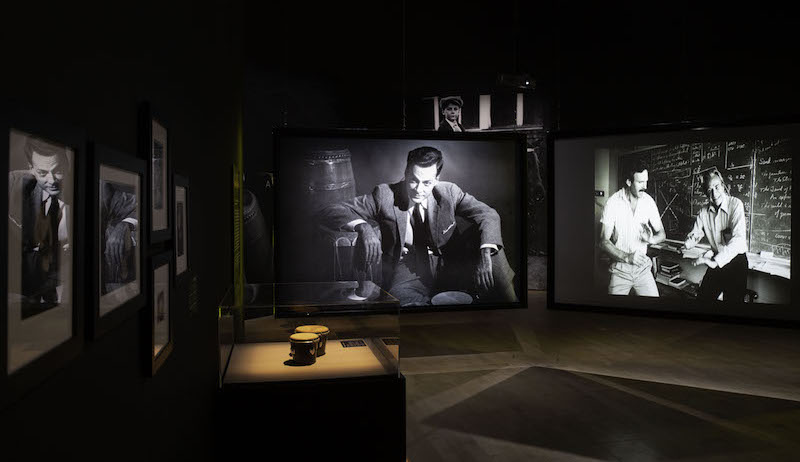Physics isn’t exactly a subject you can broach over dinner, much less the theory of quantum mechanics or nanotechnology. So at first glance, the ArtScience Museum’s new exhibition on the late Nobel Prize-winning physicist Richard Feynman may not elicit any curiosity from the general public. At least, not like Future World or previous displays that are universally attractive, such as the recent Marvel Studios: Ten Years of Heroes.
But stay with us, and perhaps by the end you’ll be intrigued enough to stroll through the showcase. All Possible Paths: Richard Feynman’s Curious Life is the museum’s first curated and self-produced work, done up in collaboration with Nanyang Technological University and Nobel Museum in Sweden.
If you’re wondering why the curators chose Feynman over all the other names out there, it’s because 2018 is his centenary, and conferences across the globe have been celebrating it. But on a more interesting note, the man wasn’t your stereotypical scientist — his unconventional life saw him pursuing a hobby in painting and playing the bongo drums, mischievously cracking safes filled with top secret information, and following his fascination with the tiny Russian republic of Tuva.
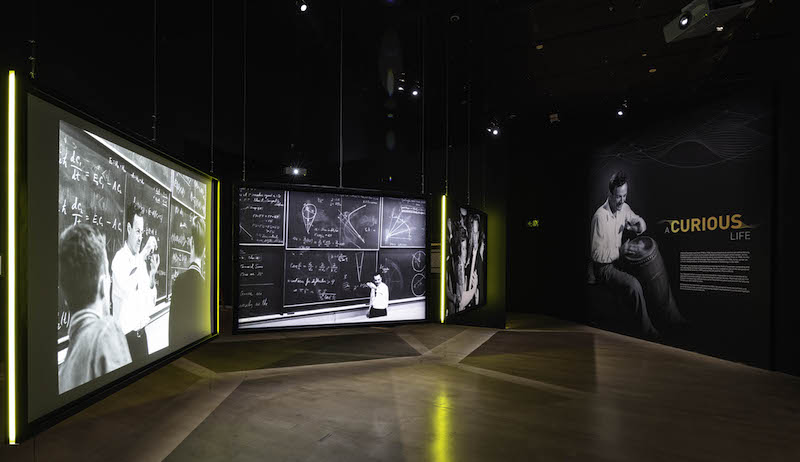
Of course, there’s also the not-so-small matter of his contributions to our understanding of the mechanisms of the universe. Feynman was most known for his influential work in quantum mechanics, which you’ll (hopefully) gain a better comprehension of after going through the displays. And aside from basic introductions to scientific concepts, the showcase also spotlights his personal items, documents, and letters.
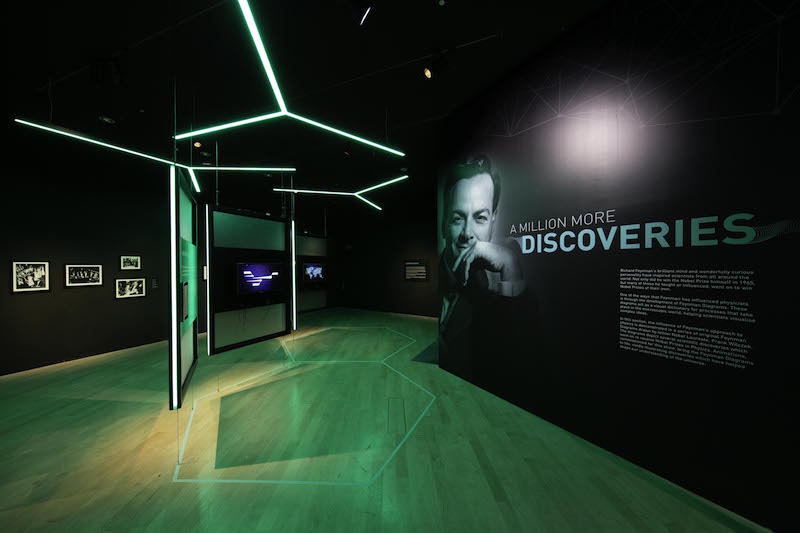
Divided into four themes, All Possible Paths starts by offering a glimpse of Feynman the man, with family photos, a series of paintings done by him, and his famous bongo drums. One highlight is the replica of his blackboard, bearing quotes such as “what I cannot create, I do not understand” and “know how to solve every problem that has been solved”, from the day he passed away in 1988.
After you’ve read through a quick timeline of his life, take a seat on a beanbag to listen to some of his lectures from the past.
However, if your brain can only process so much science, take a break from theories and check out the artworks that provide a visual for Feynman’s work. These installations, most of them mesmerizing, help to introduce concepts like parton theory, weak force, quantum electrodynamics, Feynman diagrams, nanotechnology, and quantum computers in a creative (read: not so dry) way.
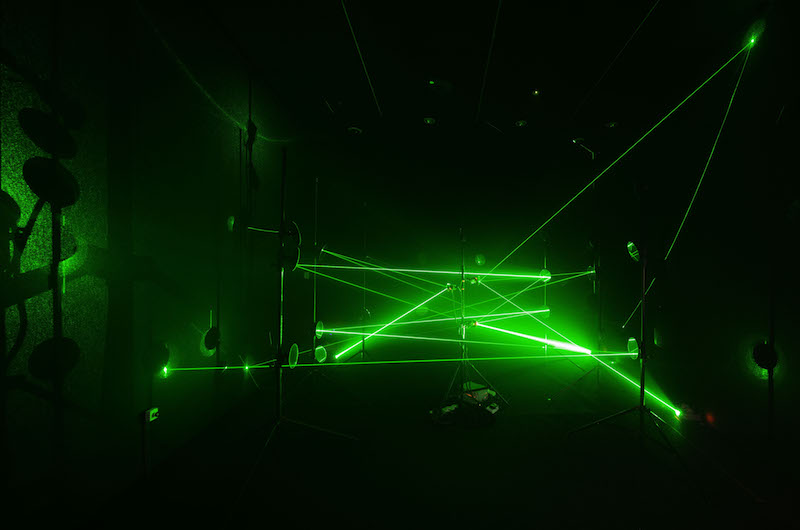
Japanese artist Eiji Sumi’s mixed media installation of particles glittering in the light is particularly spellbinding. You may not fully grasp the parton theory behind the artwork, but you can definitely appreciate the art. Also look out for Malaysian architect/artist Jun Ong’s newly commissioned work, a quantum computing-inspired installation of laser lights and mirrors that create distorted dimensions and continuous laser paths.
Then there are the LED lights that move in sporadic wave-like patterns done by artist ::vtol:: (aka Dmitry Morozov) to mimic particles taking “all possible paths” when they move from a point to another.
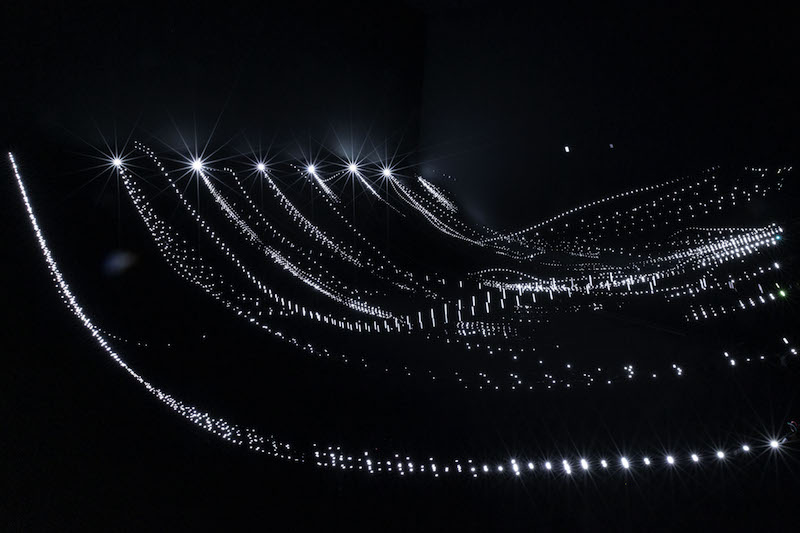
Finally, the last section delves into Feynman’s scientific contributions and how they helped to re-interpret physics. Before you head out, watch the video of Tuva celebrating Feynman and his legacy, despite him never making it to the republic (he passed away before he had a chance to visit). And just before the exit sits a blackboard with pieces of chalk for visitors to pen down their own questions and thoughts on Feynman or the exhibit.
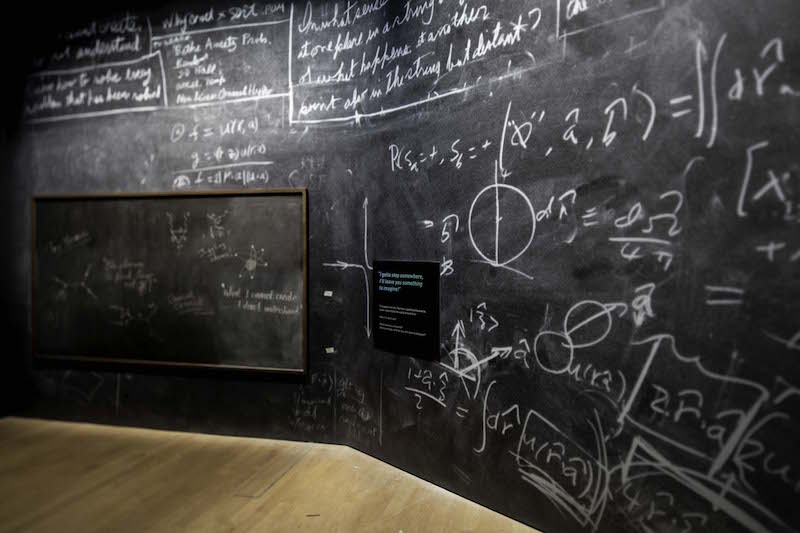
FIND IT:
All Possible Paths: Richard Feynman’s Curious Life is on from now till Mar 3, 2019, at ArtScience Museum.
Adults $12-$15, seniors and children $8-$10.
MRT: Bayfront
